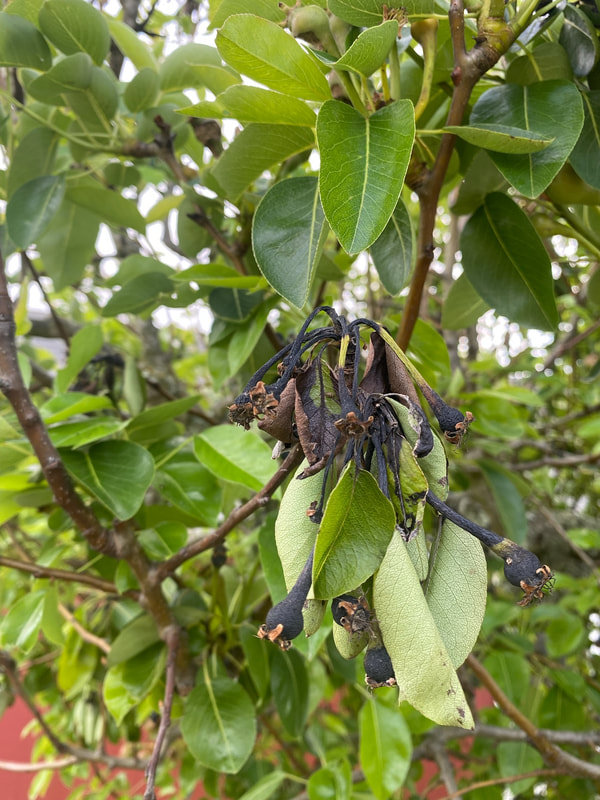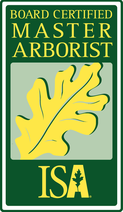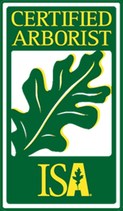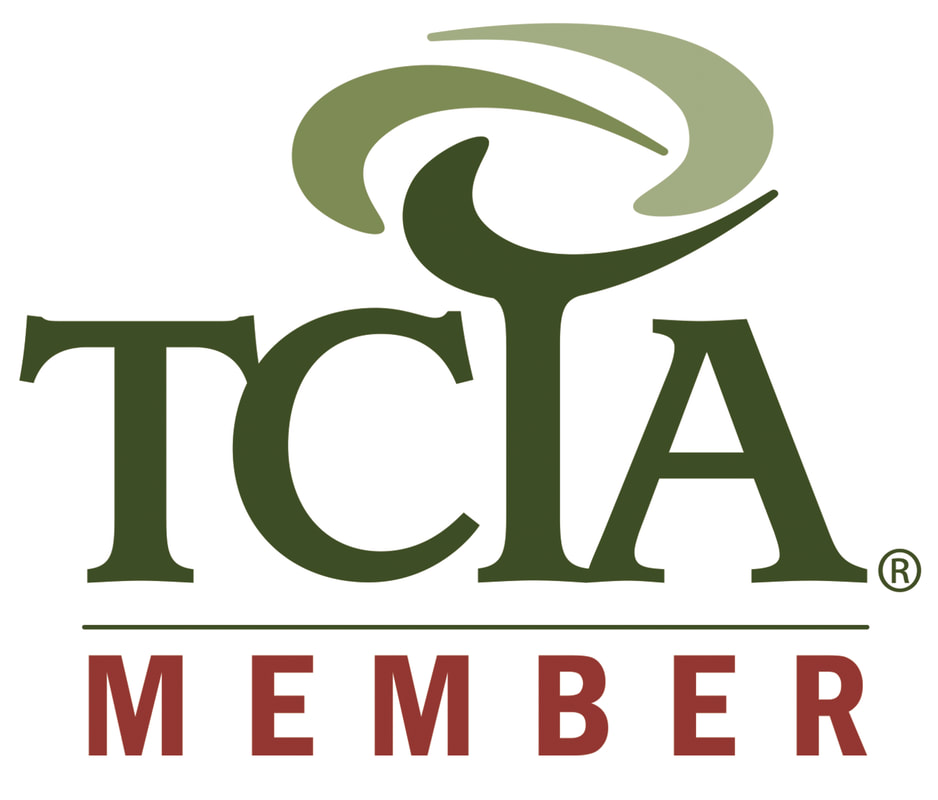- Merlin Arborist Group
-
Services
- Structural & Aesthetic Pruning
- Arborist Reports
- Tree Risk Assessment
- Tree Appraisal
- Tree Surveys & Inventories
- Tree Management Plans
- Construction Impact Mitigation
- Orchard Design, Installation, & Maintenance
- Organic Agriculture Consulting
- Integrated Pest Management
- Digital Urban Forest Mapping
- Fire Risk Reduction
- Raptor Renesting
- About Us
- Blog
- Contact
|
As spring arrives and the apple, quince and pear trees of Sonoma County bloom, fire blight can become a major issue. While spring is the peak season for fire blight, this continues through the summer!
Fire blight (caused by the bacteria Erwinia amylovora) affects many plants in the Rosaceae family, but pear, quince and apple trees are particularly susceptible. Spread: In the spring, fire blight spreads most easily when trees are blooming, daytime temperatures are between 75ºF and 85ºF and the weather is rainy or humid. Cankers on the trunk and branches of infected trees begin to ooze a watery liquid that becomes dark after exposure to air. Insects are attracted to the sweet liquid and subsequently spread the infection to flowers and wounds on nearby susceptible trees. Infected blossoms and stems will initially look water soaked and gray, then they will shrivel and turn brown or black. Once bacteria enter a wound or flower, they spread via the vascular system of the tree. Leaves on diseased shoots may have a blackened midrib and veins, and a hook shape may form at the end of a diseased shoot. In older wood, cankers will form. Older cankers will be brown, dried out and may have a sunken look with cracked bark. The infection can spread two to three feet beyond the canker, and the wood will be streaked with red in areas where the infection is spreading. Management: In the spring and summer, prune out blight where you see it. Summer cuts must be at least 12 to 18 inches below the edge of a visible canker or infection site, because the bacteria is actively spreading in the vascular system. Try to cut into 2 year old or older wood. In the winter, prune diseased twigs and branches when the tree and bacteria are dormant. Winter cuts can be less aggressive - cutting at least 8 inches below the canker is recommended. Sterilize pruning tools between each cut with diluted bleach or Lysol. If the infection has reached the main trunk of the tree, the tree will die. In this case it is best to cut the tree to a stump to prevent spread to other trees. Best practices: Avoid heavy pruning and heavy nitrogen fertilization. This stimulates a lot of new growth, and young shoots are more susceptible to infection. Avoid irrigation during the blooming period. The extra moisture can facilitate the spread of fire blight. Unsure how to go about pruning to control fire blight? We are happy to help you with your fruit tree pruning needs!
1 Comment
Leave a Reply. |
Merlin
|
Merlin arborist group
|
Telephone707-888-7927
|
|
WE ARE BASED OUT OF SEBASTOPOL, CA AND PROUDLY SERVE ALL OF SONOMA COUNTY
- Merlin Arborist Group
-
Services
- Structural & Aesthetic Pruning
- Arborist Reports
- Tree Risk Assessment
- Tree Appraisal
- Tree Surveys & Inventories
- Tree Management Plans
- Construction Impact Mitigation
- Orchard Design, Installation, & Maintenance
- Organic Agriculture Consulting
- Integrated Pest Management
- Digital Urban Forest Mapping
- Fire Risk Reduction
- Raptor Renesting
- About Us
- Blog
- Contact


 RSS Feed
RSS Feed




